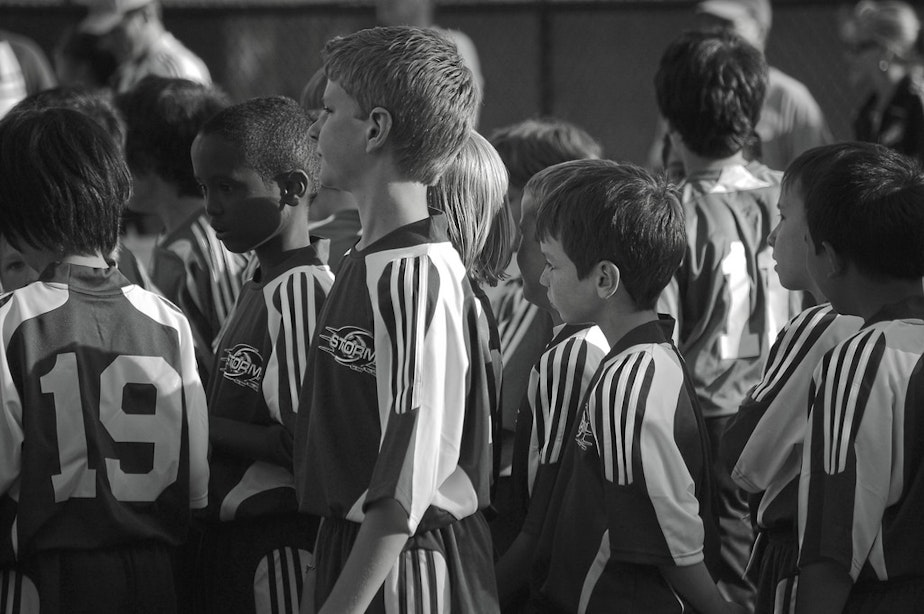How can all kids win at sports?

In sports, there are winners and losers. But for kids, the real winners are the ones who are given the opportunity to play in the first place.
“We know nationally that low-income youth are participating in sports at a much lower rate than their affluent peers and also getting less physical activity in general," said Julie McCleery, from the University of Washington's Center for Leadership in Athletics.
She joined Bill Radke and Tom Farrey, executive director at the Aspen Institute, about how to get — and keep — kids active in play.
Read more from KUOW: 'Society is psychologically abusing children' by restricting their freedom, researcher says
Youth in sports
Interview highlights
On the advantages of youth sports
Julie McCleery: Active kids become active adults, and active people are healthier people. This is very much a community health issue. And active kids do better in school. Physical activity helps cognitive function as well as overall health.
Tom Farrey: If you talk to CEOs around the country – especially women CEOs – the vast majority of them played sports and had sustained experience in sports and will tell you it was valuable in developing them as people and ultimately as leaders in our communities.
Barriers kids face in playing sports
McCleery: Youth sports has become a big business and it costs a lot of money often to play in sports programs that have big budgets,that you need equipment for, and you have to buy uniforms, and there’s a high cost to participate and travel involved – and that’s just really eliminates a lot of opportunities for kids and families that don’t have the money to participate in that.
Farrey: I think parents love the heck out of their kids, they want the best for them. The overwhelming majority of them – our survey research shows that more than 90 percent of parents — want their kids to be involved in a sport experience, but they’re not being presented with enough low cost, locally available experiences.
Unless they’re in that organized setting from early on, and they get on the travel team, the club team starting the second, third, fourth grade – the bullet train leaves the station and they are left behind.
McCleery: Unfortunately the model right now is that if you’re not good enough to be on a select team, then maybe you don’t do any physical activity at all.
We live in a region where there are opportunities for physical activity all over the place outside our back doors, but we need to invest as a community in getting kids to take advantage of those and understand that biking, hiking, swimming and running around at recess are all great ways to get physical activity.
Sponsored
Want resources for your kids? Project Play through the Aspen Institute has eight strategies to help kids play.
Produced for web by Kara McDermott




